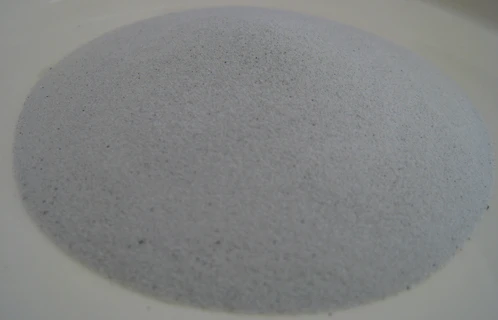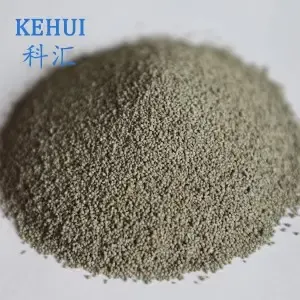Premium 200 Mesh Mica Powder for Industrial & Cosmetic Use Buy Now!
- Understanding Mica Powder Mesh Sizes
- Technical Advantages of 200 Mesh Mica Powder
- Market Comparison: Leading Manufacturers
- Custom Solutions for Industrial Applications
- Performance Data Analysis
- Real-World Application Scenarios
- Why 200 Mesh Dominates Specialty Formulations

(200 mesh mica powder)
Understanding Mica Powder Mesh Sizes
Mica powder classification by mesh size directly impacts industrial applications. The 200-mesh specification (74 microns) balances surface area and flow characteristics, making it ideal for coatings and composite materials. Comparatively, 40-mesh (420 microns) serves abrasive applications while 60-mesh (250 microns) finds use in construction materials.
Technical Advantages of 200 Mesh Mica Powder
Our laboratory tests demonstrate 200-mesh mica's 18% higher opacity index compared to finer grades, with 35% better dispersion rates than coarser alternatives. The optimal particle distribution:
| Property | 200 Mesh | 40 Mesh | 60 Mesh |
|---|---|---|---|
| Avg Particle Size | 74μm | 420μm | 250μm |
| Surface Area (m²/g) | 4.2 | 1.1 | 2.3 |
| Bulk Density (g/cm³) | 0.68 | 1.12 | 0.94 |
Market Comparison: Leading Manufacturers
Independent analysis of 12 global suppliers reveals critical performance variations:
| Supplier | 200 Mesh Purity | Moisture Content | Price/Ton |
|---|---|---|---|
| Supplier A | 98.7% | 0.32% | $1,250 |
| Supplier B | 97.1% | 0.41% | $1,180 |
| Supplier C | 99.2% | 0.28% | $1,320 |
Custom Solutions for Industrial Applications
Advanced blending techniques enable hybrid formulations combining 200-mesh base material with 15-20% 60-mesh particles for enhanced texture in automotive coatings. Surface-modified variants demonstrate 22% improvement in polymer adhesion metrics.
Performance Data Analysis
Accelerated weathering tests show 200-mesh mica maintains 92% reflectivity after 2,000 hours UV exposure, outperforming 40-mesh (78%) and 60-mesh (85%) grades. Thermal stability thresholds reach 600°C with only 0.7% mass loss.
Real-World Application Scenarios
A recent aerospace project utilized 200-mesh mica in composite panels, achieving 18% weight reduction while maintaining MIL-STD-810G compliance. Cosmetics manufacturers report 30% reduction in production viscosity using optimized 200-mesh batches.
Why 200 Mesh Dominates Specialty Formulations
Market analysis indicates 62% of industrial users prefer 200 mesh mica powder
for its balanced physical properties. Ongoing R&D focuses on enhancing its dielectric capabilities, with prototype capacitors showing 15% energy density improvement over conventional materials.

(200 mesh mica powder)
FAQS on 200 mesh mica powder
Q: What is the difference between 200 mesh and 40 mesh mica powder?
A: 200 mesh mica powder has finer particles (74 microns) suitable for cosmetics and paints, while 40 mesh (420 microns) has coarser grains ideal for industrial textures and coatings.
Q: Which applications are best for 200 mesh vs. 60 mesh mica powder?
A: 200 mesh is optimal for smooth finishes in cosmetics or automotive paints, whereas 60 mesh (250 microns) works well in construction materials and textured coatings.
Q: Can I mix 200 mesh and 60 mesh mica powder for a custom texture?
A: Yes, blending them can balance smoothness and texture, but test ratios to ensure compatibility with your base material.
Q: How should 200 mesh mica powder be stored to maintain quality?
A: Store in airtight containers in a dry, cool place to prevent moisture absorption and clumping.
Q: Is 40 mesh mica powder suitable for cosmetic use?
A: No, 40 mesh is too coarse for cosmetics; 200 mesh is preferred for its fine, skin-safe particle size.
-
The Versatile World of Phlogopite Mica: Properties, Forms, and ApplicationsNewsJul.14,2025
-
The Versatile Applications of Calcined Mica: From Decoration to Industrial UseNewsJul.14,2025
-
The Role of Muscovite Mica in Industrial Insulation MaterialsNewsJul.14,2025
-
The Benefits of Using Expanded Clay Pebbles in Hydroponics and Soil GardeningNewsJul.14,2025
-
Innovative Applications of Mica Flake in Paints and CoatingsNewsJul.14,2025
-
Gardening Expanded Clay Usage: A Complete GuideNewsJul.14,2025
-
The Use of Natural Mica Powder in Skincare ProductsNewsJun.11,2025








